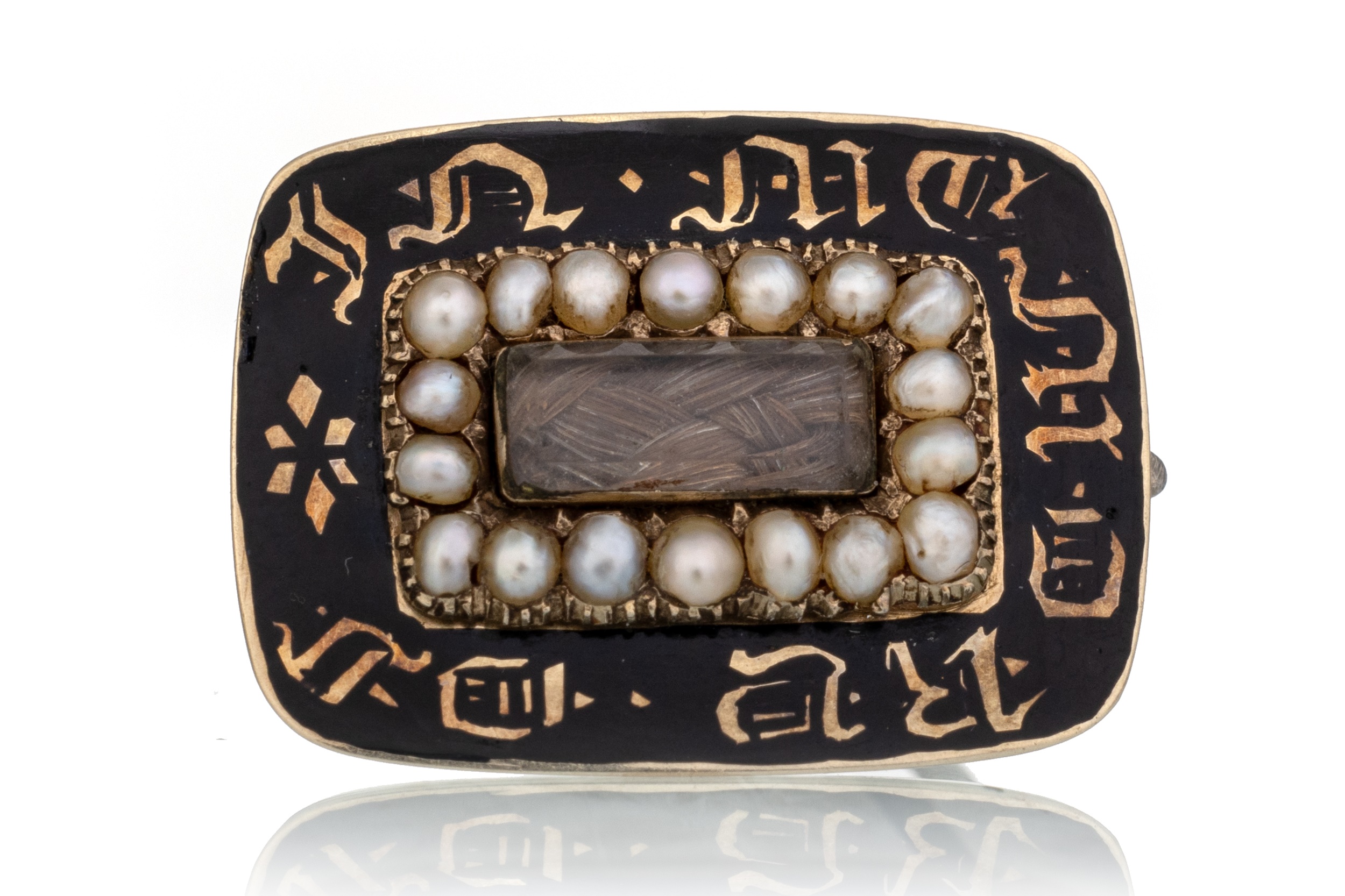Mourning Jewellery – Then and Now
The Georgian and Victorian periods were vital for Britain in terms of shaping our history however during these hard periods, mortality rates were high and life expectancy was low.
During these times, with factors such as infectious diseases including influenzas, measles, scarlet fever and many others, the average life expectancy for men was 40 and women 42 so ironically, death was part of life for our ancestors during these eras.
From the 1860’s and following Prince Albert’s death, mourning etiquette became very strict among all echelons of society with the bereaved expected to follow a strict code of conduct for many years. The mourning period was dependent upon your relation to the deceased with widows suffering the most. For one year, they were in full mourning meaning that they could only wear black, non-reflective clothing with minimal to no jewellery. A widow could also not go out in society other than to attend church. For the second year, they were in half mourning whereby some colours such as grey and lavender could be worn with minimal ornamentation allowed which is why the majority of mourning jewellery that we see is delicate and of small form.
The Victorian Era hugely contributed to many funerary customs that we now see as part of the process but perhaps one of the most notable practices was the art of mourning jewellery. Mourning jewellery precedes the Victorian Era however, due to the renowned lifetime state of mourning that Queen Victoria practiced after Prince Albert’s death, it really gained popularity and even the simple art of wearing a loved one’s hair in a locket dates back to Victoria herself.
Queen Victoria was a lover of pearls and when her husband, Prince Albert, died she incorporated pearls into mourning jewellery which was often accompanied by hair or a photo. To this day, female members of the Royal Family opt for pearls when in a state of mourning. Given this, pearls became known as ‘sad women’s jewellery’.
This jewellery can take many forms in brooches, rings and pendants however typically features the same key components. Due to the strict code of conduct for ladies when in mourning, these pieces are often of modest size, not to interfere with the rules around wearing minimal to no jewellery. Often set with jet, onyx or black enamel, this can be set with seed pearls, skulls, urns, gothic lettering and hairwork.
One fantastic lot is 532, a small mourning brooch of typical design from the early Victorian era. Set with black enamel and seed pearls, the gothic lettering reads ‘IN MEMORY OF’, with the reverse engraved ‘Wm Gregory, died April 9, 1846, Aged 57 years'. To the central panel is a small section of the late Mr Gregory’s hair. This example has been passed through the generations and given its age, around 178 years old, it has remained in wonderful condition.
This lot is nestled amongst other fantastic examples of mourning jewellery including brooches and rings and while some may see them as macabre, they are a fantastic expression of love and showcase how the Victorians wore their heart on their sleeves, or lapels. Surviving items such as these are very hard to come by and given their sentimentality, should be handled with care for generations to come.
Entries are currently invited for the next auction taking place on 16 October. For a complimentary, no-obligation valuation, contact a specialist on 0141 810 2880 or amy@mctears.co.uk.
What's it worth?
Find out what your items are worth by completing our short valuation form - it's free!
